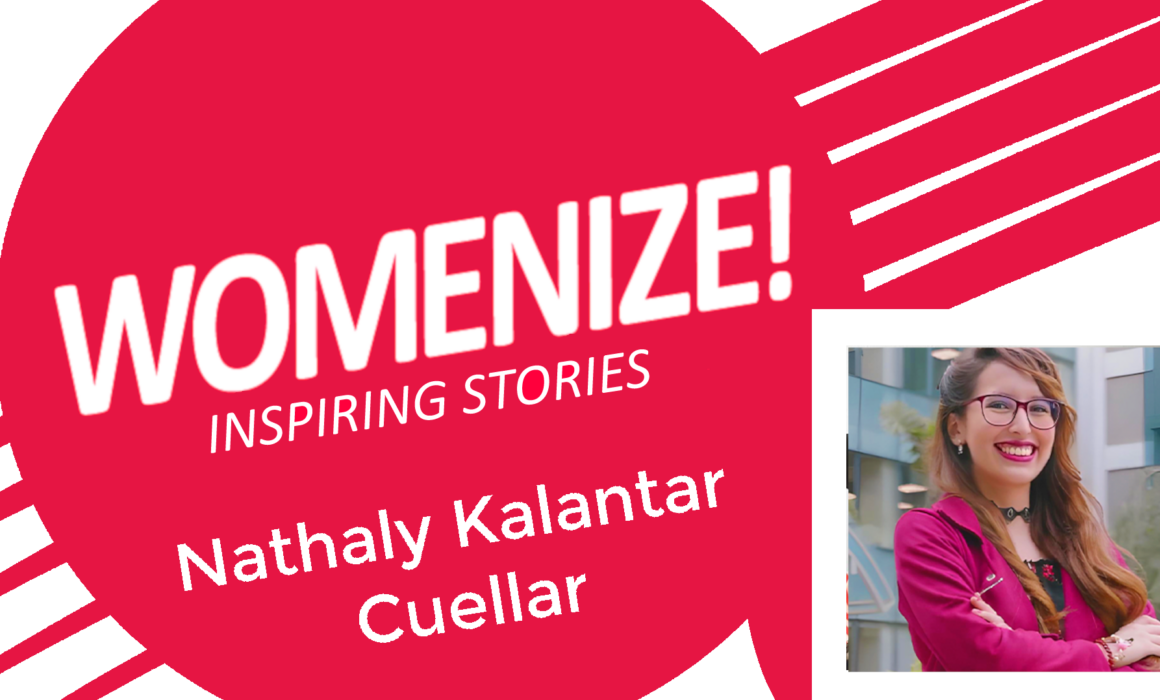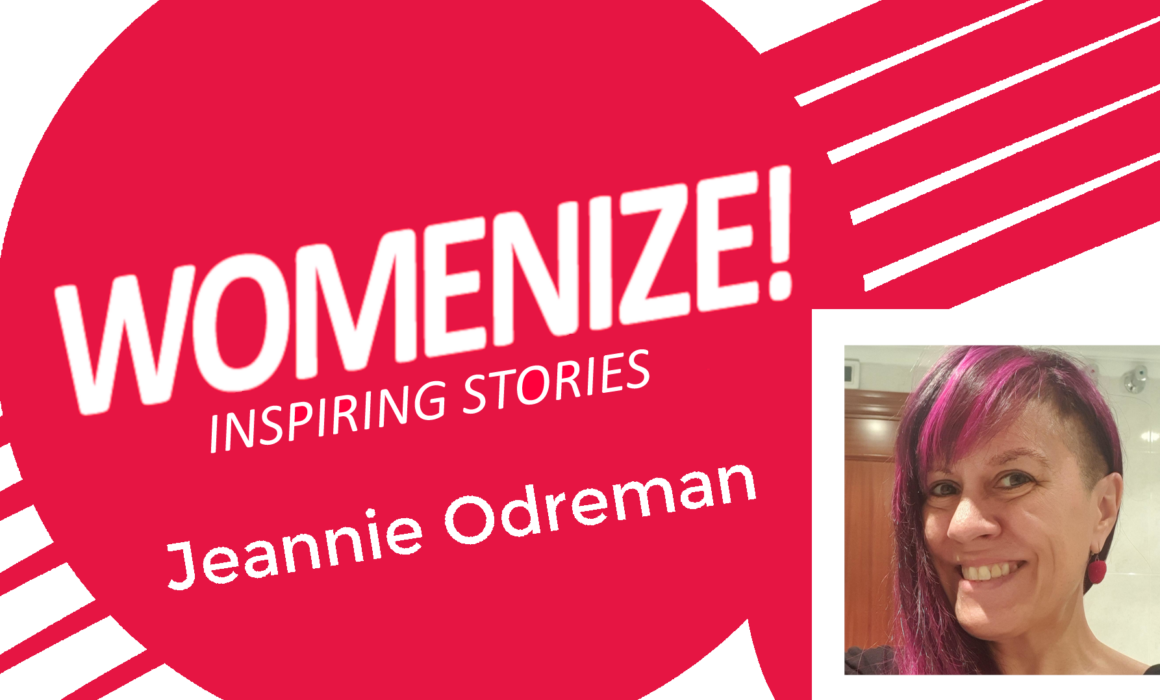Nathaly Kalantar Cuellar – Womenize! – Inspiring Stories
Womenize! – Inspiring Stories is our weekly series featuring inspirational individuals from games and tech. For this edition we talked to Nathaly Kalantar Cuellar, Game Designer & Assistant Producer at Mr. iO Games. She speaks about how her multicultural roots and passion for dance inspired “Peru Party” to preserve cultural heritage, her diverse roles in game development enhanced her leadership, and game jams fueled her creativity and love for the industry. Read more about Nathaly here:
Hi Nathaly! ‘Peru Party’ has evolved from a thesis project into an award-winning IP, combining cultural heritage with innovative technology like virtual reality. How has this journey shaped your understanding of the power of games to preserve and share cultural stories, and what has been the most rewarding aspect of seeing this project come to life?
I come from a multicultural Peruvian-Iranian family, and since I was a child, I’ve loved dancing, so you can imagine I’m a huge fan of Just Dance. In the 2018 version, I found out they had included a song by an Iranian group, and you can’t imagine the scream of excitement I let out. For the first time, a mainstream video game included something from my culture, something that made me feel represented. I could go to my friends and say, “Hey, that song is in Farsi.” That feeling of pride in your culture was something I wanted to bring into future projects. After all, video games are a beautiful tool for sharing cultural heritage, because they are a universal language people from all ages can get to understand.
Take games like Venba, Okami, or even some servers in Roblox that recreate cities from around the world… They all represent a culture and showcase it to others in a way that allows you to learn about and appreciate them. That is how the idea for Peru Party was born, a project that combines my two passions: video games and dance.
When I was little, my school taught us about the traditional dances of my country, and I was completely fascinated by the incredible diversity we have. Being able to bring all that cultural richness into an innovative medium like virtual reality feels like watching a dream come true. At one of the recent events where we showcased the prototype, an eight-year-old girl came over to try it, and I’ll never forget the smile of excitement on her face as she danced. When she finished, she ran to her mom, super excited, telling her how amazing it was to see everything through the VR headset and asking if she could try it again. It is in moments like these that I realize all the effort was worth it.
You’ve worn many hats in game development, from 3D artist to narrative designer and even programmer. How has exploring multiple roles shaped your perspective on leading a team, and what advice would you give to aspiring developers looking to diversify their skills?
When I first entered the industry, I had no idea which role would be ideal for me. To be honest, I didn’t even realize that video games would become my professional path, haha. At the beginning, everything can feel uncertain and confusing, especially in a world where some people tell you to specialize in one thing, while others advise you to be as versatile as possible. My approach was the same as when I go to a buffet: try a little bit of everything. To do this, I relied on game jams, personal projects or collaborations with friends, and assignments in class.
Over time, I started to understand the workflow pipeline of each area much better, and now I primarily work as a producer. Since I have a broader understanding of different areas, I can communicate more effectively with my team, define a realistic scope, tackle problems assertively by finding solutions that don’t negatively impact other areas, and think about every aspect of the project to ensure it flows with good synergy. I believe that a true leader, at least in this industry, needs to have a deep understanding of what each area offers in order to maximize its potential and create a cohesive game in every aspect.
Although the journey wasn’t easy at first, and I often had to learn how to use certain software as we developed the game, it’s a rewarding experience to look back at all the roles I’ve taken on. It gives you a clearer perspective on what you enjoy the most. My advice? Take advantage of game jams to explore different areas. And if you feel frustrated about not understanding a specific aspect, YouTube can be a great ally in moments of desperation.
You’ve been part of numerous game jams, earning recognition for your innovative and educational games. How do these events fuel your creativity, and what’s the most important lesson you’ve learned from collaborating in such high-pressure environments?
I think I have an addiction to game jams, haha. I love the fast-paced environment and the constant energy they bring. They let you unleash your ideas and encounter all kinds of situations and team dynamics.
In my first game jam, no one on my team was skilled in programming, so we had to get creative and find a way to make a game without any coding. Fun fact, we ended up making it in Google Slides. Looking back, I can confidently say that restrictions help unlock true creativity. When you are given complete freedom to choose a game idea without any limitations, you often end up with something either too common or so ambitious that it becomes impossible to complete. On the other hand, when you are working within parameters you must follow, it not only ensures the work gets done during the game jam but also forces your brain to come up with unexpected ways to implement the theme.
One of the things I value most about game jams is that they give you the freedom to fail. Failure has always terrified me. Letting down a boss or a community with an unsuccessful game is a daunting thought. In such a volatile market, there is so much uncertainty about whether a game will become popular or generate revenue, and that constant pressure can crush projects that have been in development for years. That is why I see game jams as little laboratories where you can afford to experiment. Sometimes the combinations you create work really well, and you might want to continue developing them. Other times, they might blow up and end up as a funny anecdote and a learning experience.
Game jams have reignited my passion for playing and creating games. They serve as a constant reminder of why I chose to be part of the video game industry.
Thanks for this interview, Nathaly!
Nathaly’s links: LinkedIn
Womenize! – Inspiring Stories Feature by Madeleine Egger



